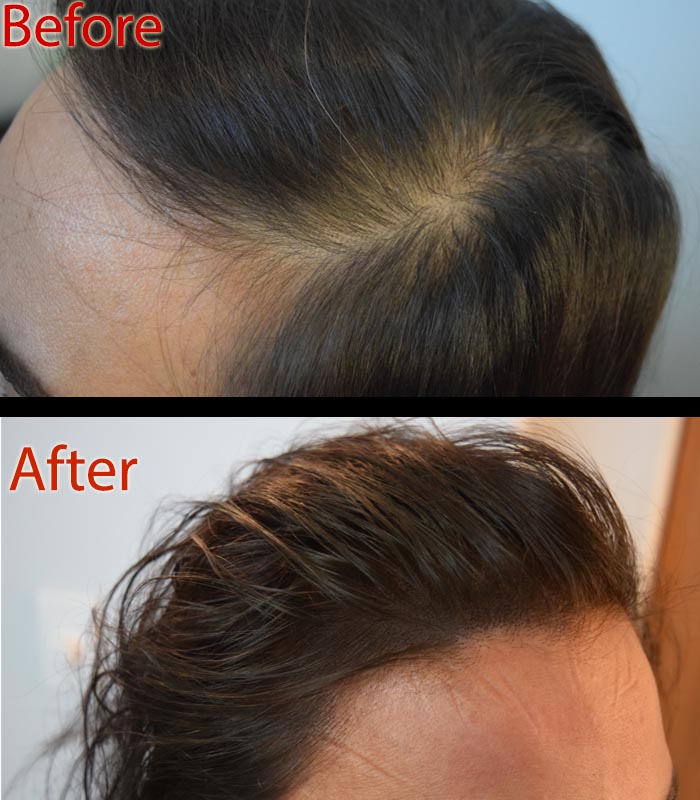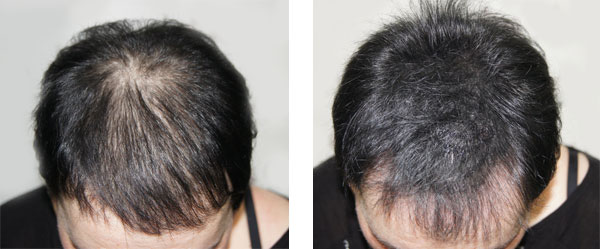Many women experience noticeable hair loss a few months after giving birth, which certainly is not a pleasant sight, especially after hair growth during pregnancy. But this is a natural phenomenon, called postpartum hair loss. However, it is a temporary side effect of hormonal changes following pregnancy. So hair loss in new moms should not be a cause for concern.
While it can be unsettling to see more hair in the shower drain or on your brush, rest assured that it’s usually not a sign of something serious. If the sight is unsettling, there are hair loss solutions that can be tried.
Understanding Postpartum Hair Loss
During pregnancy, high estrogen levels keep your hair follicles in a constant growth phase. After childbirth, estrogen levels plummet, triggering a large number of follicles to enter the resting phase and eventually shed.
This shedding typically peaks around 3-4 months postpartum but can last up to a year.
Increased shedding
It is natural for hair to shed after pregnancy. If you notice more hair coming out when you brush or shower, consider it a part of the process. You may experience thinning of hair. Remember, the phase is temporary and shouldn’t lead to significant bald patches.
Coping with Postpartum Hair Loss
While you can’t prevent postpartum hair loss, there are ways to manage it and minimize the impact.
Gentle hair care
Be gentle with your hair when brushing and styling. Avoid tight hairstyles and harsh products that can contribute to breakage.
Scalp massage
Gently massaging your scalp can improve circulation and promote hair growth. This may or may not help postpartum hair loss. but for long-term hair care, massage is an excellent addition to hair care regime.
Nutritious diet
Ensure you’re getting enough essential vitamins and minerals that support hair health, like iron, zinc, and biotin.
For some women, even after hair regrows, the experience of postpartum hair loss can leave a lasting impact on self-confidence, especially if they were struggling with hair loss even before pregnancy. If your story is the same and you seek a permanent solution to hair loss woes, scalp micropigmentation might be a good alternative.
Scalp Micropigmentation: A Long-Term Solution
SMP is a non-surgical technique for women experiencing postpartum hair loss after pregnancy, particularly those who desire a more immediate and long-lasting aesthetic improvement.
Here’s how SMP can help:
Illusion of thicker hair
SMP uses tiny needles to inject pigment on the second layer of the scalp. The deposited ink mimicks the appearance of hair follicles. This creates a realistic illusion of a denser hairline, fuller scalp, or even the ability to camouflage any remaining hair loss.
Low-maintenance
Unlike hair transplants or wigs, SMP requires minimal maintenance. Once the initial sessions are complete, occasional touch-ups might be needed, but it’s a much less demanding option compared to other solutions.
Confidence boost
By creating a thicker and fuller-looking scalp, SMP can significantly improve self-confidence and overall well-being.
If postpartum hair loss is affecting your self-esteem, scalp micropigmentation can be a viable option to consider. Consult with a qualified SMP practitioner in Arizona to discuss your specific needs and explore whether this innovative technique can help you achieve the desired results.
The best Arizona scalp artists are available for consultation at the DermiMatch Clinic. Schedule yours now and find a solution to your postpartum hair loss woes.


